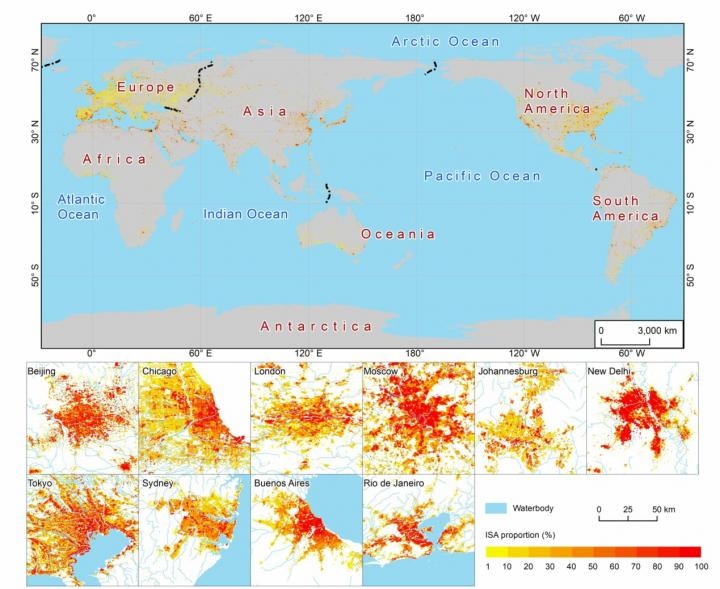May 17 2019
The dependence of humans on the spatial pattern of the global urban surface area is a significant problem, which has currently gained wider attention worldwide.
 This is the global pattern of ISA and specific cased in selected cities. (Image credit: Science China Press)
This is the global pattern of ISA and specific cased in selected cities. (Image credit: Science China Press)
Scientists used DMSP/OLS and MODIS NDVI nighttime light imageries and developed regression models that can estimate the fraction of impervious surface area (ISA) and urban green space (UGS) in 30 cities across the world for confirmation. Global ISA/UGS were mapped. The fraction of ISA/UGS within the built-up area was also evaluated.
The study showed the global ISA of 45.26 × 104 km2, constituting 60.01% of the global urban land area. Europe, North America, and Asia form 84.25% of the world’s total ISA. The study also found that the proportion of ISA located in built-up areas on the continental scale is in the order of Africa (>70%) > South America > Oceania > Asia (>60%) > North America > Europe (>50%). These areas were mostly in southwestern Europe, southeastern North America, and eastern and western Asia. Europe, North America, and Asia form 89.44% of the world’s total UGS.
The cities of developed countries in North America and Europe revealed a marked mosaic of ISA and UGS composites in urban construction. Hence, the proportion of UGS is quite high in those cities. Although the proportion of UGS in built-up areas of underdeveloped and developing countries is moderately low, urban environments should be improved for survival.
The global ISA/UGS mapping is essential for enhancing the quality of human settlements; promoting the urban environmental quality toward livable, ecological, and sustainable goals; and guiding urban and regional development planning.
This study was supported by the Major Projects of the National Natural Science Foundation of China (Grant No. 41590842), the Strategic Priority Research Program of the Chinese Academy of Sciences, Pan-Third Pole Environment Study for a Green Silk Road (Pan-TPE; Grant No. XDA20040400), and the National High Technology Research and Development Program of China (Grant No. 2013AA122802).